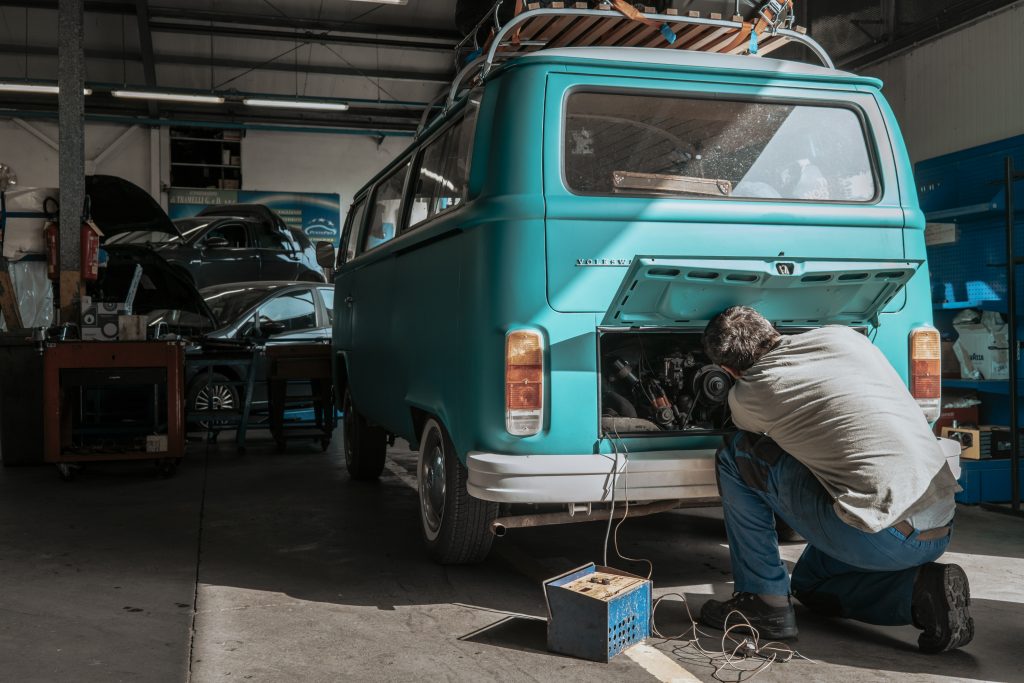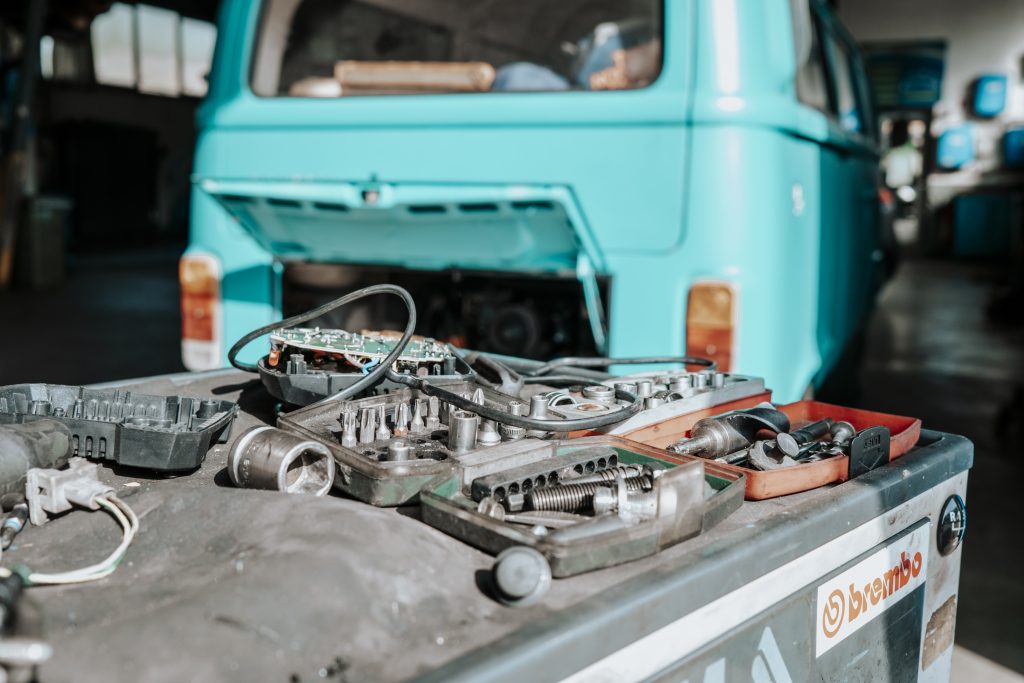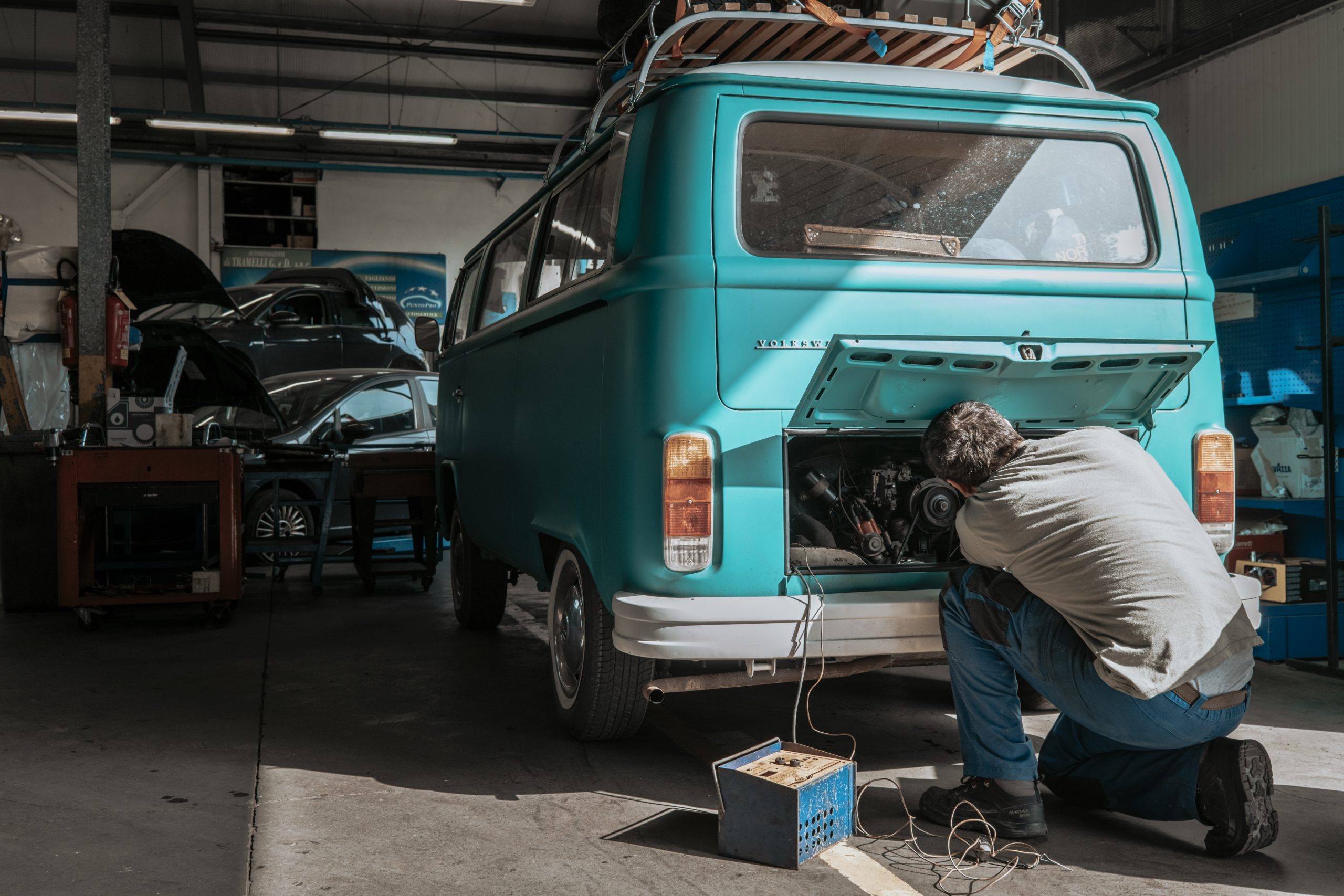While driving in Switzerland, from Liechtenstein to Zürich to be precise, the battery light started flickering suddenly. Not being panicked right away we continued driving towards Uster where a friend of us lives. Here we parked the car somewhere to check where we actually needed to go. When we wanted to move the van she didn’t start. But, like I told you in a previous post, after some pushing her engine started running again.
What to do when your battery light flickers?
Normally you stop but I am actually very happy that we continued driving and by accident stopped on a somewhat empty and not flat road. This way we could easily push her when she didn’t want to start. If we would’ve stopped on the highway right after the light started flickering we probably needed to call the road services. So, what do you do? That depends on you and of course the sound of the engine. Alexine sounded fine, we also know that we often have problems with her regarding electricity cables. That’s why we didn’t panic. It’s good to know your car so you will know what to do.
Then what happens?
The first thing we did was checking what we knew is sometimes the issue with her. Like I said, we had problems in the past. In England we were actually standing still on a very dangerous corner on a hill where people were driving crazy! Luckily a police officer came by and helped us out. He actually towed us to a parking place where we could fix her. The issue? A blown fuse. (I only knew because I called my father, who is my road service from a distance).
So, we first checked the things we knew; all fuses were okay, cables seemed to be fine, battery didn’t make a crazy noise and when the engine was working it sounded fine. So far no idea what the problem could be. We forgot our voltmeter so couldn’t measure the electric circuit.
A voltmeter is an instrument used for measuring electric potential difference between two points in an electric circuit. It is connected in parallel. It usually has a high resistance so that it takes negligible current from the circuit. So it measures voltages of either direct or alternating electric current on a scale usually graduated in volts, millivolts or kilovolts.

When do you go to a garage?
We believe that before going on a trip like this one needs to know the van. So, last summer we followed a course of a week getting to know our van. We checked the engine, set valves, changed bougies, oil & brake fluid. We learned what to look at when things go wrong, how to change a tire and how to change our breaks. We got to know how an engine works and had time to actually work on our van and do these things. So, we learned a lot but of course not enough and you forget things as well. But it’s a start.
What I would always do is check everything you know and rule things out. It’s good to know what it cannot be so the list of what the problem can be becomes smaller and when you go to a garage you can actually tell them what you’ve already figured out, so they don’t have to. Saves a lot of time and money.
However, in some cases, like ours, you end up in a garage anyway. While driving from Zürich to Lucarno we had to go over mountains and through tunnels. Especially in the tunnels the light started flickering. So, there was a problem with our battery but only in tunnels. That means, our solar panels are working, and they are actually charging our battery. Wow! We are driving hybrid now. You think that’s great right? Well, not when your engine is not made for this. Our van is old and she needs to drive on old and bad fossil.
Where do you go when your van has a problem?
Firstly, we went to a garage in Switzerland in a tiny village. They often have more time, are cheaper and sometimes still work with old cars. But this time we had no luck. He sends us to an electric car shop in Lucarno. So, we went there, but he didn’t want to help us. They all told us immediately that the alternator was broken even though they did not measure it. Which to us sound a bit strange so we went to another one, and another one, and another one.
The problem is electric which means you need to go to a garage that has knowledge of the electric system, often you see signs with ‘Bosch Service’. And then you need to find the one that you feel okay with, which is sometimes quite difficult. I often feel garages just want my money and they aren’t waiting for my knowledge on the car.
In Switzerland we didn’t find a garage that could or wanted to help us, which I guess was a good thing. Cause, in Italy we found a garage via a friend. These are always the best ones! A friend of a friend works with cars and he had worked at this garage. Because these are small villages, they of course know each other. We brought the van there, they did some measurements and figured out it indeed was the alternator. Changing the alternator isn’t a cheap fix, neither a quick one. So, the van was standing at the garage for a full day, and in the end even the night. Because we felt we could trust these people we left her there. If we wouldn’t trust them, we wouldn’t leave the van there. You want to see what they are doing on your car, not only because you have to pay for it in the end but also because you learn from what they are doing. If something goes wrong later on you can fix it yourself.
Tip: always take a photo before they start, and during is also nice. I take photos and video’s all the time when people are working on my van.

What is an alternator and how can it cause a problem?
Pfoe I’m really getting into detail here so if you are not into cars and you don’t care about fixing problems like these or even know about them, do continue to scroll. If you are interested do read and if you know more or better do leave a comment below.
So, here we go. I’ll try to keep is as basic and simple as possible. To be honest not so difficult as I only know the basics.
Anyway, your engine has a battery. Without this battery the engine is not doing anything. But a battery needs to be connected to the engine otherwise it doesn’t make sense, right?
So, the alternator is a generator whose purpose is to distribute electricity to the car and recharge the battery. All vehicles with a standard internal combustion engine will have an alternator. The alternator is about the size of a coconut and is generally mounted to the front of the engine and has a belt (the V-belt) running around it.
The alternator provides the car with the bulk of its electricity and helps recharge the battery. But to do all of that, the alternator must first turn mechanical energy into electricity. The belt’s movement — the mechanical energy — spins the alternator’s rotor at a high speed within the stator.
Electricity is made as the rotor spins. The magnets surrounding the rotor are deliberately placed so that as they pass over the copper wiring in the stator, a magnetic field is created.
This magnetic field, in turn, produces voltage that is captured by the stator. This power then reaches the voltage regulator, which disperses electricity to the vehicle and manages the amount of voltage the battery receives.
So you can see that many things can cause problems for an alternator.
From one problem into the other
Sometimes a garage thinks they know the problem but then find out it wasn’t actually the problem and something else is causing it. That happens, because like I said before fixing a problem is ruling things out. Also for a garage.
So, when the garage told us it’s the alternator that’s not working we were doubting it. But they are the pro’s in the end. So after a full day of work on the car they didn’t fix the problem. Luckily we could stay at our friends place because sleeping in the van wouldn’t be an option. Normally we wouldn’t leave the van at a garage but like I wrote before, as these were friends of our friend we trusted them.
They changed the alternator for a new one but suddenly her engine worked on 3 not 4 cylinders. What are cylinders? Every engine has cylinders, there are cars with 3 cylinders but normally it’s four, or six, or eight. Our van has four. Working on three cylinders means there is something wrong. The people at the garage didn’t know what was wrong and neither did I. As they speak in Italian it’s quite hard to understand what they are talking about.
But the next day when we woke up, after a not so good night of sleep, we got a call that the car was fixed. Happily we went to the garage to check it out.
In the end it wasn’t the alternator at all, it was a cable that was broken which connects the alternator with the battery. A problem that could’ve been fixed easily. So, the kind garage said that we did not have to pay anything except for the new alternator. Which is very kind actually cause we didn’t have an appointment and it was right before Easter so they were very busy anyway.
All good in the end. Now we have our van back and are able to hit the road again! On our way to the valley of Trebbia!
Love, Milene & Yuri


